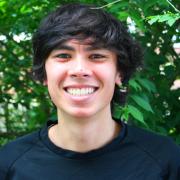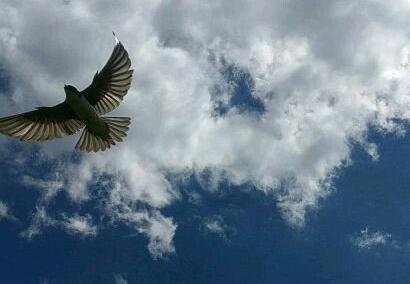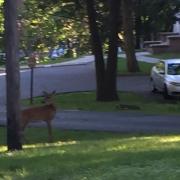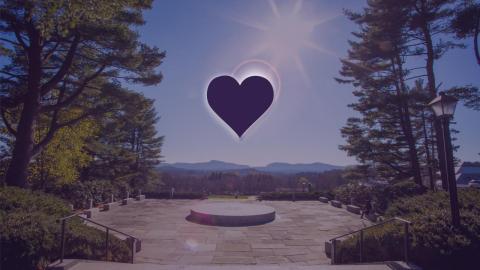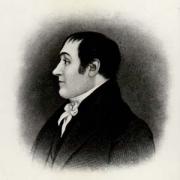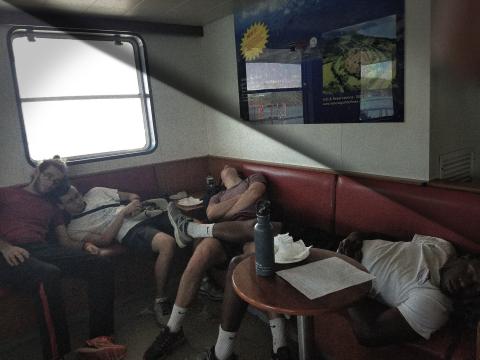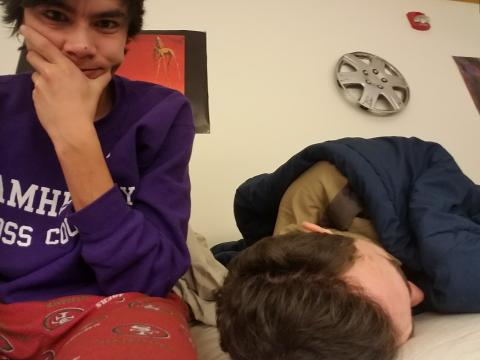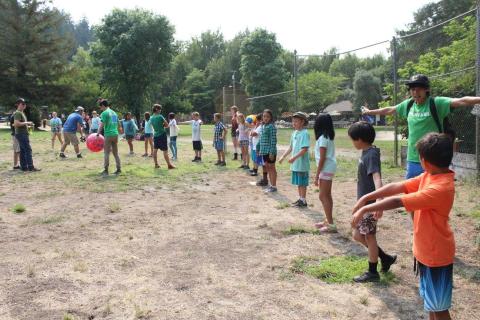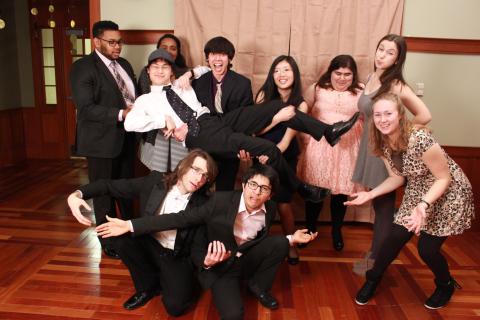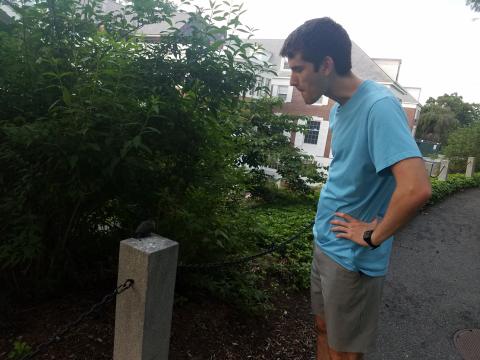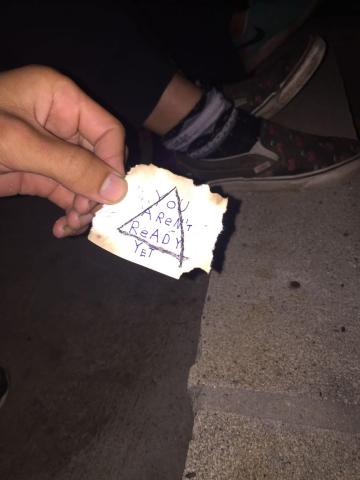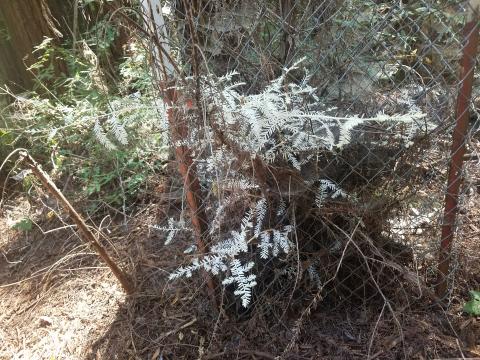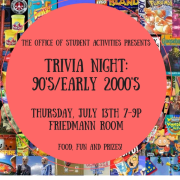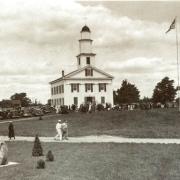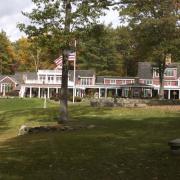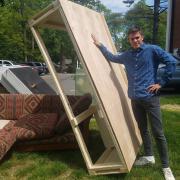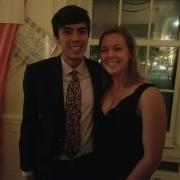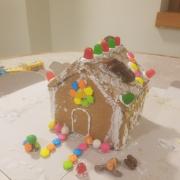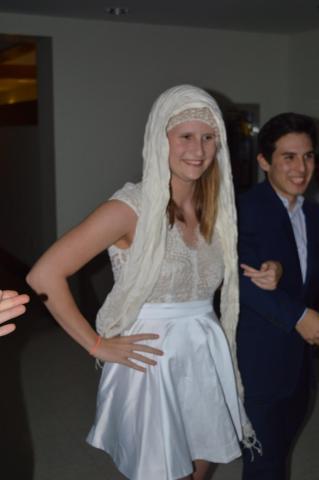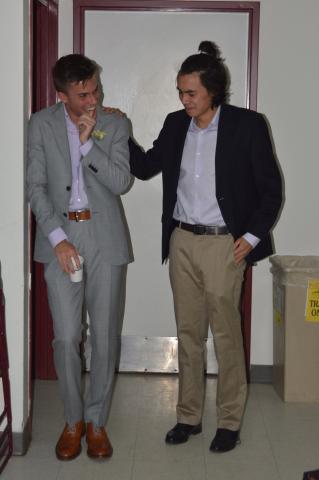As you might get from some of my previous posts, I am a pretty big fan of wildlife. For those like me, I want to briefly highlight some of the more exciting fauna of the Amherst area. For those who consider themselves emancipated youth from mother nature, please don’t worry. Most of the exciting animals are hard to find if don’t go looking for them.
Picture: A tree swallow. Credit Clotfelter lab.
Great shot of a tree swallow captured by one of my @AmherstCollege students on her phone pic.twitter.com/yntniGL4Hm
— Ethan Clotfelter (@ethanclotfelter) June 22, 2017
Tree Swallow: Professor Ethan Clotfelter of the Biology Department conducts research on tree swallows over every summer. I was able to join him and his team over the weekend as they took measurements of 10 day old birds and tagged them. The bird sanctuary is just about a 5 minute walk from the tennis courts by the Greenway dorms. The birds live in tree hollows, which are hard to find. This means they quickly adopt the boxes he puts up as their new homes. They dart around during daylight hours, filling the summer days with their happy chirping.
Turtles: These incredible reptiles are a bit harder to find, but if you head east of campus on the bike path for about a 15 minute bike you’ll find yourself by some swampy ponds where they can be spotted crossing the path. The bike path spans just over 10 miles, and during the fall turns into a gorgeous tunnel of fall foliage.
Green frog: There was day last week where a thunderstorm rolled in as I finished up work, so I had to wait until just before dusk to be able to bike. As I rode past the place where the turtles normally are, the air filled with the happy croaking of these frogs. I got a bit too distracted, since I barely noticed the frog sitting in front of my on the path until just before I was about to hit it. Luckily I was able to swerve to avoid squashing it.
Peregrine falcon:
Many people know these birds of prey for the incredible speeds they can reach while diving from the sky. A family of peregrine falcons nests on the Umass library roof, and others live in the trees around campus. On rare occasions, a falcon will be spotted streaking from the sky toward a squirrel or rabbit. I haven’t yet seen one in the middle of hunting, but twice I have seen a falcon with its captured prey. Other hawks can be found around the bird sanctuary and surrounding trails.
Rabbits: These are pretty easy to find year-round. Usually not in the claws of the falcons or hawks, but sometimes yes, it happens.
Eastern coyote: Last year I went for a run with a teammate and decided to explore a new portion of the Robert Frost trail. In a clearing we found what appeared to be two coyotes calmly walking about 150 yards away from us.. The Northeast also has a decent coywolf population. Coywolves are much less scary than they sound. They are wolf-coyote hybrids. Most eastern coyotes have some wolf genes in them, and some also have some dog genetics. This makes them sized a bit larger than a western coyote, with a howl that sounds more like a wolf, and they are adaptable to both forest and developed areas.
Black Bear: Last fall, I drove out for a run at the Quabbin, a quarry town that has now been turned into a reservoir. Along the trail, some teammates saw a black bear cross in front of them. I haven't seen any other black bear, but it's definitely the most intimidating megafauna I've heard of in the area.
Foxes: I have seen a couple of small foxes while running in the early mornings. They slink along the grassy areas like cats in a hurry. My sister likes foxes a lot, but the sightings have never overlapped with her visiting.
Bobcats: Bobcats are pretty amazing animals. They are the size of an overgrown house cat but have incredible strength and athleticism. They are also normally shy and avoid humans. Unfortunately, the only bobcat I have seen around Amherst had been hit by a car and was dead on the side of the road.
Deer: I actually have not seen a deer around Amherst. I see them all the time back home, and I have seen them staying with friends in New Jersey over break. I know people hunt deer in some of the woods in Western Massachusetts. My girlfriend recently saw one while working with a professor in the bird sanctuary, then another by her dorm that same day.
The wish list:
Water Snakes: Don’t worry there aren’t any venomous water snakes in Massachusetts. But apparently, they can get big. They are harmless, but it makes me avoid swimming in the swampier bodies of water around campus.
Fireflies: I grew up spending some time every summer visiting around Baltimore and loved catching fireflies. I have been hoping to see some this summer, but they haven’t started coming out yet.
Moose: The moose is a larger-than-life animal around campus. The year before I came to Amherst, a moose wandered onto campus causing gaining quick popularity. After it was transported off, some students rallied behind its image to campaign for a new mascot. Though we are now the mammoths, the moose lives on in lore and in a large metal statue that showed up in Frost library randomly one night. The moose has been my favorite animal since I was young, and I hope one day to see one around campus.
